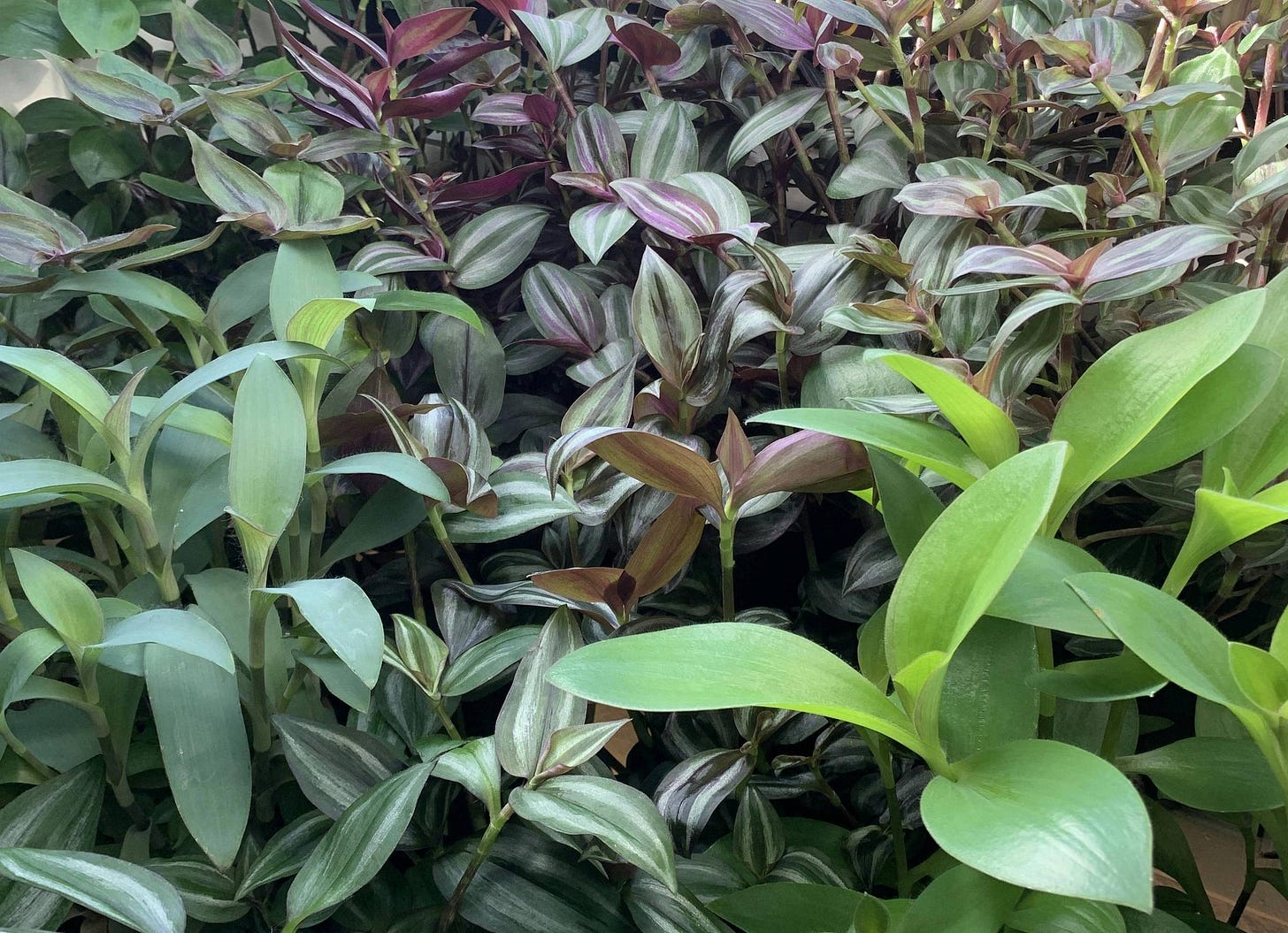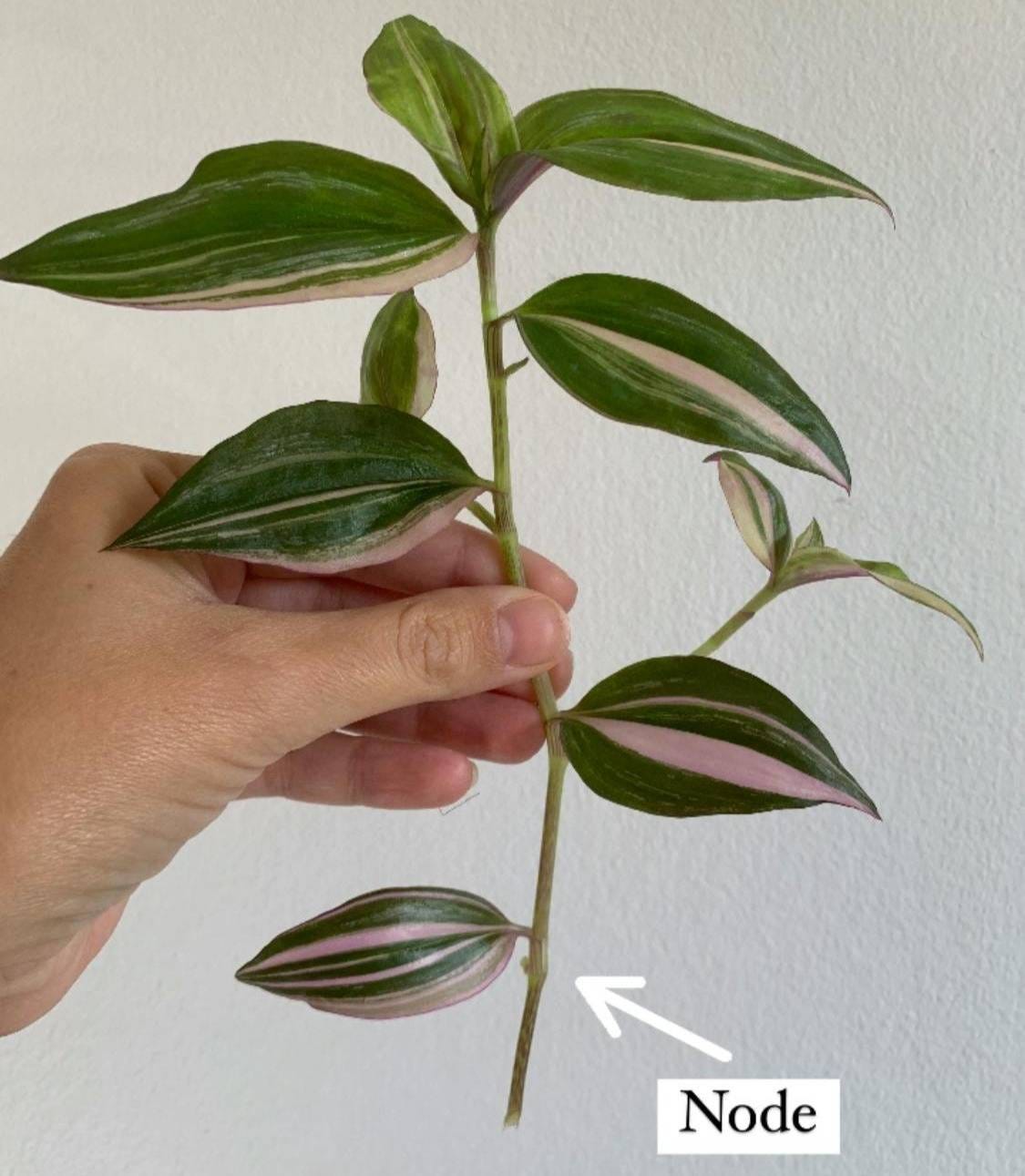Everything You Need to Know About Propagating Tradescantias
Disclaimer: This post contains affiliate links, which means I earn a small commission if you make a purchase using my links or my code, at no extra cost to you. Your support helps me keep sharing Tradescantia tips and content—thank you!
Looking to propagate your Tradescantias? You’re in the right place!
Maybe you’ve just bought a new Tradescantia cutting and are wondering how to turn it into a big, full-looking plant? Or perhaps your plant has grown so much that you’re thinking about splitting it into two? I’ve got you covered.
I’ll give you all my best tips on propagating Tradescantias. Having grown and propagated them for years now, I can assure you that it’s easier than you might think!
Ready to turn one plant into many? Keep reading for all my tips and tricks on propagating Tradescantias.
Let’s get started!
Can You Propagate Every Type of Tradescantia?
Yes, every type of Tradescantia can be propagated!
While some varieties might be a bit trickier, most are surprisingly easy to work with. Your success will depend on factors like the health of your original plant, the environment, and even the time of year.
But don’t worry, I’ll be sharing plenty of helpful tips to make propagation easier, no matter which type of Tradescantia you have.
Choosing the Right Propagation Method
When it comes to propagating your Tradescantia, both water and soil methods work great and are easy to do. It all depends on what you like and what you have available. Want to make an existing plant look fuller? Soil propagation is the way to go. If you’re trying to make a new plant, both methods work well.
I usually recommend soil propagation because it’s one step less, and Tradescantias root just as fast in soil as in water. Plus, when they root in soil, the roots are already used to growing in soil, unlike water roots, which need time to adjust when moved to soil.
In the end, it’s all about what works best for you.
How to Know When Your Plant Is Ready to Be Propagated
If you’re used to propagating, this might be familiar territory for you. But if you’re new to it, let’s start with the most important part of the plant—the node. A node is the part of the stem where new leaves, roots, or branches grow. When propagating, it’s essential to include a node in your cutting because that’s where the new roots will form. Simply put, where there’s a leaf, there’s a node!
When you’re ready to propagate, look for healthy stems that are long enough and have a few nodes. Try to leave at least one or two nodes on the mother plant after cutting, and make sure your cuttings have a couple of nodes as well. These nodes are where new roots will grow and help your cutting get off to a good start.
Prepping Your Cutting
Take your cutting and remove one or two leaves from the bottom of the stem to expose the nodes. If the nodes are spread out along the stem, you can also trim away some of the stem below the last node. It’s important to remove the leaves from any nodes that will be placed under soil or water, as the leaves will otherwise rot and can damage the cutting.
Soil Propagation
Now, using a stick or something similar, make a hole in the soil and place your cutting in it. Repeat this process with as many cuttings as you’d like. Water thoroughly and make sure the soil is fully saturated. After that, just water when the soil has almost dried out.
I often notice that when you first put a cutting directly into soil, the leaves might feel a bit soft and floppy. But as the cutting starts to grow roots, the leaves will regain their strength and firmness.
Water Propagation
For water propagation, take your cuttings and place them in water. Once your cuttings are in the water, leave them for about 1-3 weeks. By then, you’ll likely start to see roots growing. Some cuttings might take a bit longer to develop roots, depending on their health and the environment. As long as the cuttings seem healthy and the leaves remain firm, it’s fine to leave them in the water a little longer. Just be sure to keep the water level up and change the water once a week.
When the roots are well-established, it’s time to plant them in soil. Choose a pot that comfortably fits all your cuttings but isn’t too large. A pot that’s too big can raise the risk of overwatering and root rot. Water thoroughly and make sure the soil is fully saturated. After that, water only when the soil has nearly dried out.
Sphagnum Moss
I’m a big fan of sphagnum moss. Sphagnum moss is a fantastic option for rooting struggling Tradescantia cuttings. Most of the time, soil and water work just fine, so there’s no need to use anything else. But sometimes, if a cutting is having trouble rooting, sphagnum moss can work wonders. And if you read my last article, you know I’m such a fan that I even grow half of my plants in moss.
The moss retains water well while still allowing airflow to the roots, which helps prevent rot. To use sphagnum moss for propagation, simply wet the moss, then gently squeeze out the excess water so it’s damp but not soggy.
Place your cuttings in the moss and keep it consistently moist, but not overly wet. In just a few weeks, you should start to see roots developing.
Other Rooting Options: Perlite, LECA, Pon, and Fluval Stratum
I would say that there’s no real need to propagate Tradescantias any other way than the three methods I’ve already described, but since the title is Everything You Need to Know About Propagating Tradescantias, I can’t leave out these alternatives. So, if you’re looking to experiment with different rooting methods, perlite, LECA, pon, and even Fluval Stratum are great alternatives to water and soil propagation. Each medium offers its own benefits and can be especially useful for controlling moisture and airflow.
Perlite: Perlite is a lightweight, airy material that holds moisture without getting soggy. It’s perfect for rooting cuttings because it allows for good drainage and aeration, reducing the risk of rot. Simply fill a container with perlite, insert your cuttings, and keep the medium slightly moist.
LECA (Lightweight Expanded Clay Aggregate): LECA is made of clay pebbles that retain moisture and provide excellent airflow around the roots. Place your cuttings in a container with LECA, and make sure the bottom layer stays moist while the top remains dry to encourage root growth.
Pon: Pon is an inorganic substrate made of minerals that offers great drainage and aeration, much like LECA but with a finer texture. It’s easy to monitor moisture levels, and it prevents overwatering. Just place your cuttings in pon, water thoroughly, and let it do its job while maintaining the right balance of moisture and airflow.
Fluval Stratum: Fluval Stratum is another great option. This substrate is commonly used in aquariums, but it’s excellent for propagating plants as well. It holds moisture well while allowing for proper aeration, and like pon, it helps prevent overwatering.
Each of these options can be a great way to ensure healthy root growth while minimizing the risk of rot, and they might be just what your Tradescantia needs! I’ve only tried pon and Fluval Stratum myself, and both worked well, especially when I used self-watering pots.
Rooting Hormones for Tradescantias
Rooting hormones, often available as powders, gels, or liquids, are used to promote faster and stronger root growth in plant cuttings. These products contain synthetic auxins, which are natural plant hormones that stimulate root development.
While rooting hormones can be useful for certain more difficult-to-root plants, they are generally not necessary for Tradescantias. These plants root so easily in both water and soil that they don’t usually require any extra help.
What Can Go Wrong When Propagating Tradescantias?
Even though Tradescantias are generally easy to propagate, things don’t always go perfectly. Here are a few common issues you might encounter:
Rotting Cuttings: If the cutting is kept in overly wet conditions, such as soggy soil, it can rot. Make sure the soil isn’t too wet and let it almost dry out before watering again. If your cutting has already started to rot, cut off all the black, mushy parts and try rooting it in sphagnum moss instead.
No Root Growth: If the cutting isn’t rooting after a few weeks, there could be a couple of reasons. Is there a healthy, undamaged node? Is it getting enough light? Does it have too many leaves to support, leaving no energy to grow roots? If the leaves still feel firm and strong, I wouldn’t worry, but if they start feeling soft and floppy, consider switching propagation methods or removing a few leaves if it has many.
Soft and Floppy Leaves: It’s completely normal for leaves to look a bit soft or floppy right after propagation. Most of the time, they will perk up within a week or so. However, if they stay soft or get worse, the cutting may be struggling to grow roots and is dehydrated. This can happen if the cutting was unhealthy from the start. In this case, I’d recommend moving it to sphagnum moss.
Slow Rooting: Sometimes, rooting just takes longer depending on the plant variety, the season, or the environment. If your cutting seems healthy but isn’t rooting quickly, give it more time and ensure the conditions are right.
Wrapping Up
Propagating Tradescantias is usually easy, but like with any plant care, things can sometimes go wrong. By keeping an eye on the common issues I’ve mentioned, you’ll be better prepared to troubleshoot and give your cuttings the best chance.
Let me know if you have any questions about propagating—I’m always happy to help!
If you haven’t already, don’t forget to subscribe so you never miss out on future newsletters.
Thanks for reading, and happy planting!
Katja






